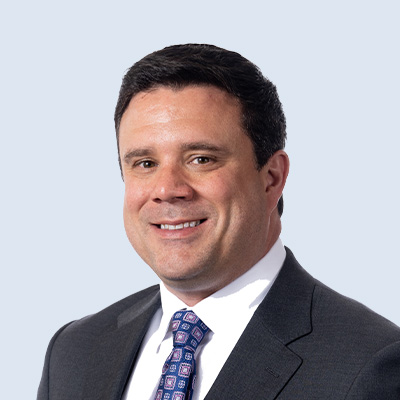Ted Grossman: Hello, my name is Ted Grossman, principal at the Alexander Group, joined here today by Sean Ryan, who is my counterpart in leading the Alexander Group’s Technology vertical practice. Welcome to the second in our series of podcasts on revenue growth trends in the technology industry and this discussion today. We want to delve into coverage model changes in tech that are emerging as a result of the movement from perpetual license on-premises solutions toward cloud-based as a service subscription and consumption models. Overall, we are seeing a significant coverage model evolution as companies move from traditional sell and renew sales motions to those focusing on land and expand lending more valuable customers up front and expanding the customer base post-sale through a focus on customer service, upsell and cross-sell. Sean, if you had to sum it up, what would you say is driving these coverage model changes and how aggressively are companies moving?
Sean Ryan: Well, thanks Ted, and great to be here with you again talking about these important developments. First of all, after years of lip service among some of the biggest tech players about moving to a subscription as a service model, we’ve finally seen a concerted effort over the last 12 months from traditional technology companies across hardware, software and service, finally moving aggressively to the as a service business. And this is creating implications not only for those companies, but also for the pure play born and cloud companies that have largely had this marketplace themselves to this point. For example, in our recently completed cloud sales index, traditional tech players told us they were planning to grow their share of as a service revenue by 400 percent over the next four years, and I think a variety of factors driving this huge change. First of all, customers are really demanding it.
Increasingly, they want to move large capital expenditures on software and hardware to the opex line to provide themselves more flexibility. Second, competition from born and cloud companies is placing traditional companies at risk of losing important accounts and relationships. Third, the investor community is really starting to ask some pointed questions of management teams at top tech firms around what they’re doing to build scalable, sustainable revenue streams as a source of continuing competitive advantage. And so I think these factors are really working together to cause traditional companies to accelerate their migration to as a service model, and they’re also impacting the pure play companies that are having to compete with these large organizations, often for the first time. So these decisions are not without ramifications for both sets of companies. Ted, based on what you see with your clients, how is this changing the traditional technology coverage landscape?
ed Grossman: Sean, the short answer to that question is that the change is profound. We’re not talking about tweaks. We’re talking about fairly wholesale changes to the coverage model. And let me tell you why. First is, everyone knows the majority of the revenue associated with an as a service deal is not realized at Brookings. It’s captured in the out years after the initial sale. In fact, our research indicates that for every dollar of initial ads, the service bookings companies are driving six to seven dollars of revenue in the subsequent four years. High performance companies are driving eight to nine dollars in these out years. So what does this mean for the traditional coverage models? It means that instead of spending the bulk of sales resources and investment on getting that initial booking, we must be increasingly concerned with all aspects of the customer lifecycle. The most important focus here is on building a robust post-initial sales capability. Traditional maintenance renewal teams are not nearly enough or have the right skills to monetize an asset service relationship where ensuring adoption and extracting maximum capability out of the technology is paramount. Companies are using roles like adoption managers, solution assurance, customer success, higher order account management and post-sales technical specialists to secure customer relationships, drive continuous value and ensure expansion of product and solution offerings within their accounts.
Sean Ryan: It’s a great point, Ted. The increased post-sales focus also has ramifications for what companies are doing early on in the sales cycle to in order to better drive as a service economics, the customer and prospect targeting process has to improve as well. Industry leaders are using behavioral usage data to uncover patterns and determine which customers and prospects are more likely to expand at higher rates. These analytics are then used to inform early sales cycle behavior where we see more technically adept and capable resources, and these are typically inside or digital sales resources, particularly building and leveraging social communities of interest to enhance the quality and quantity of opportunities for land and expand sales motions.
If we just think about a customer lifecycle in three simple stages early sales, cycle configuration, negotiation and close and post-sales expansion and retention. What we’re seeing is a significant reallocation of sales spending and resource from negotiation, closing configuration stage to early sales cycle and post-sales. As a quick example, a traditional on prem model is usually somewhere in the neighborhood of five percent early sales cycle, 90% configuration negotiation and close, and 5% post-sales with respect to sales resource allocation. If I look at an emerging as a service model, they tend to look more like 20% early sales cycle, 40% negotiation in close and 40% post-sales. So what we’re starting to see is the resources spread more evenly across the customer lifecycle as companies move to subscription models. Simply put, this transformation is going to require new roles, processes, use cases, tools and enablement and compensation structures in order to effectively monetize the service environment.
Ted Grossman: So what’s the takeaway for traditional tech companies trying to make this transition or for pure play companies that are trying to scale these capabilities first? Companies need to look at their coverage by offering angiography. Some markets are adopting as a service more quickly than others, and some offerings are more compelling and client ready than others. Companies must determine where to accelerate transition and where it is advisable to preserve the status quo. Second, traditional tech companies with perpetual license sales need to rationalize and quantify the impact on your revenue by aggressively moving to an as a service to ensure that they are mindful of the short-term and long-term implications of the shift. These implications must be communicated to both public and private investor stakeholders. Third, both pure play and traditional tech companies must engineer an attractive financial and business value case for customers to move from perpetual to cloud solutions. And finally, companies must transition effectively or enhance the existing sales model to accommodate the nuances and effective as a service selling. The longer you dabble, the longer the path to profitability.
Sean Ryan: The good news is that almost every traditional tech company and every pure play company is at some stage of development where they’re struggling with some or all of these issues. We had Alexander Group working with customers on a daily basis to develop the frameworks and the capabilities needed to facilitate this change. In addition, we are engaging a broader community on these issues to delve deeply into best practices and potential pitfalls of these transformations.
For information or how Alexander Group can help you navigate these issues within your own company. Please feel free to contact me or Ted at www.alexandergroup.com. And thank you for listening.



